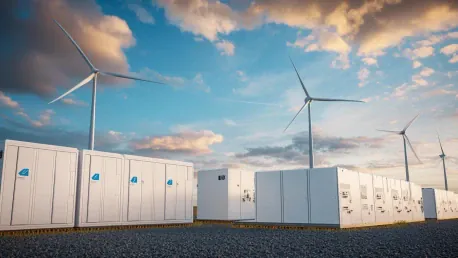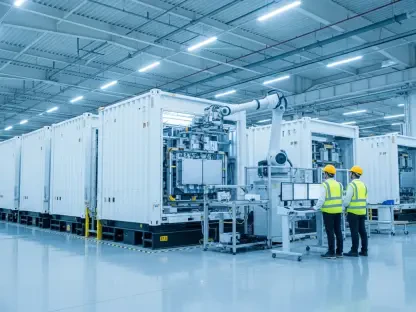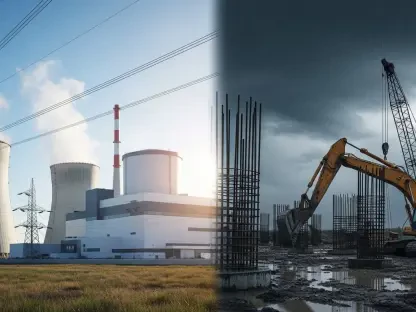Today, we’re speaking with Christopher Hailstone, an expert in energy management, renewable energy, and electricity delivery. Christopher has vast experience in providing insights on grid reliability and security, making him a valuable resource as we discuss the latest developments in Poland’s energy storage landscape.
We’ll cover the objectives and criteria for the recently launched capex support scheme by the National Fund for Environmental Protection and Water Management, the application process, PGE’s long-term energy storage plans, the impact on Poland’s energy security, and the role of renewable energy sources.
Can you explain the objectives behind the capex support scheme for grid-supporting BESS launched by the National Fund for Environmental Protection and Water Management?
The primary objective of the capex support scheme is to enhance the stability of the National Power Grid (KSE) in Poland and bolster energy security. This is achieved by supporting the construction of electricity storage facilities, specifically battery energy storage systems (BESS), that are at least 2MW/4MWh and connected to the transmission and distribution networks.
What criteria must electricity storage facilities meet to be eligible for this program?
To be eligible for the program, electricity storage facilities must be capable of supporting the grid by meeting a minimum specification of 2MW/4MWh. Additionally, they must be connected to the transmission and distribution (T&D) networks and adhere to all technological and component requirements specified in the scheme.
How does the funding distribution between grants and loans work within this scheme?
The funding distribution within the scheme is quite balanced, with a split of 90:10 between grants and loans. Grants can cover up to 45% of the investment costs, and this percentage can increase by 10%-20% for smaller businesses. Loan financing, available at either preferential or market terms, can cover up to 100% of the remaining costs.
Why was the funding previously difficult to unlock, and how has the new government’s pro-EU stance changed that?
Previously, unlocking EU funds was challenging due to the reluctance of the ruling Catholic right-wing PiS (Law and Justice) party to meet certain conditions required to obtain the funds. However, the new government, which has been pro-EU since 2023, has facilitated the unlocking of these funds, aligning with EU conditions more readily.
What kinds of technology and components do participants need to provide for their projects?
Participants are required to provide a comprehensive range of technologies and components for their projects. This includes BESS, inverters, transformers, fire safety and other protection systems, testing and commissioning equipment, and grid connection infrastructure. Additionally, they must ensure they have all necessary software, such as battery management systems (BMS), energy management systems (EMS), and data collection systems that comply with EU standards.
When is the application window for the capex support scheme open?
The application window for the capex support scheme is open from April 4 to May 30, 2025. This timeframe provides applicants with an opportunity to prepare and submit their proposals adequately.
Are there any specific requirements for the application process?
While specific requirements for the application process will be detailed by the National Fund for Environmental Protection and Water Management, it typically involves providing all necessary documentation, demonstrating compliance with program criteria, and outlining the financial aspects of the proposed projects.
What details can you share about the online training session for applicants?
The online training session for applicants is scheduled for April 4. This session aims to provide comprehensive guidance on the application process, ensuring that participants understand the criteria, requirements, and best practices for submitting a successful application.
PGE has announced plans to invest over €4 billion in energy storage. Can you elaborate on their goals?
PGE’s ambitious plan involves investing around €4.3 billion in energy storage over the next decade. The goal is to significantly increase their energy storage capacity, deploying 10GWh of new storage capacity and bringing their total portfolio to 17GWh. This includes expanding both existing and new pumped hydro energy storage (PHES) and BESS.
How much new storage capacity does PGE aim to deploy over the next decade?
Over the next decade, PGE aims to deploy an additional 10GWh of new storage capacity. This substantial increase will play a critical role in the stability and reliability of Poland’s power grid.
What proportion of PGE’s storage capacity consists of pumped hydro energy storage versus BESS?
PGE’s storage capacity comprises both pumped hydro energy storage (PHES) and battery energy storage systems (BESS). A significant portion of the new capacity will be in BESS, although PHES will continue to play a vital role in their overall strategy.
Can you provide details on PGE’s first major BESS project in Zarnowiec?
PGE’s first major BESS project is a 263MW/900MWh facility in Zarnowiec. This project is noteworthy not only for its scale but also because it will be supplied locally by batteries manufactured at LG Energy Solution’s plant in Wroclaw.
How does LG Energy Solution’s involvement play a role in PGE’s energy storage plans?
LG Energy Solution’s involvement is crucial as they are providing the battery systems for PGE’s major BESS project in Zarnowiec. This partnership supports local manufacturing and ensures that the necessary technology is readily available for PGE’s energy storage plans.
How does the development of storage projects contribute to energy security in Poland?
The development of storage projects is vital for energy security in Poland. It ensures stability and reliability in the power grid, mitigates the intermittency of renewable energy sources, and enhances the overall robustness of the national energy system.
What are the benefits of reducing the emission intensity of the Polish economy?
Reducing the emission intensity of the Polish economy has multiple benefits. It lowers greenhouse gas emissions, aligns with EU environmental standards, reduces dependence on fossil fuels, and improves air quality, contributing to public health and sustainability goals.
In what ways will PGE’s investment in energy storage impact Poland’s competitiveness in European and global markets?
PGE’s investment in energy storage will significantly boost Poland’s competitiveness by creating a more reliable and sustainable energy sector. It positions Poland as a leader in renewable energy integration and innovation, making it more attractive to foreign investors and enhancing its overall economic standing.
How are renewable energy sources currently influencing wholesale energy prices in Poland?
Renewable energy sources are already contributing to lower wholesale energy prices in Poland. Their increasing role in the energy mix reduces dependence on more expensive, fossil fuel-based power generation, leading to cost savings and greater price stability.
What legislative changes and support programs are in place to promote the growth of RES?
Several legislative changes and support programs have been introduced to promote the growth of renewable energy sources (RES) in Poland. These include favorable tariffs, financial incentives for renewable projects, and streamlined regulatory processes, all designed to enhance RES investment and development.
How do energy storage systems complement the expansion of RES in the National Power System?
Energy storage systems are essential for the effective integration of RES into the National Power System. They provide the necessary flexibility to balance supply and demand, store excess energy generated by RES, and ensure a stable and continuous power supply even when renewable generation is low.
What are the priorities for expanding the power and capacity of energy storage systems alongside grid development?
Priorities for expanding the power and capacity of energy storage systems include enhancing grid infrastructure, increasing storage capacity to accommodate growing RES, investing in technology advancements, and aligning regulatory frameworks to support widespread deployment.
Do you have any advice for our readers?
My advice is to stay informed and engaged with the ongoing developments in the energy sector. Embrace renewable energy and energy storage solutions as they become more accessible, and consider the long-term benefits they bring to both the environment and energy security.









